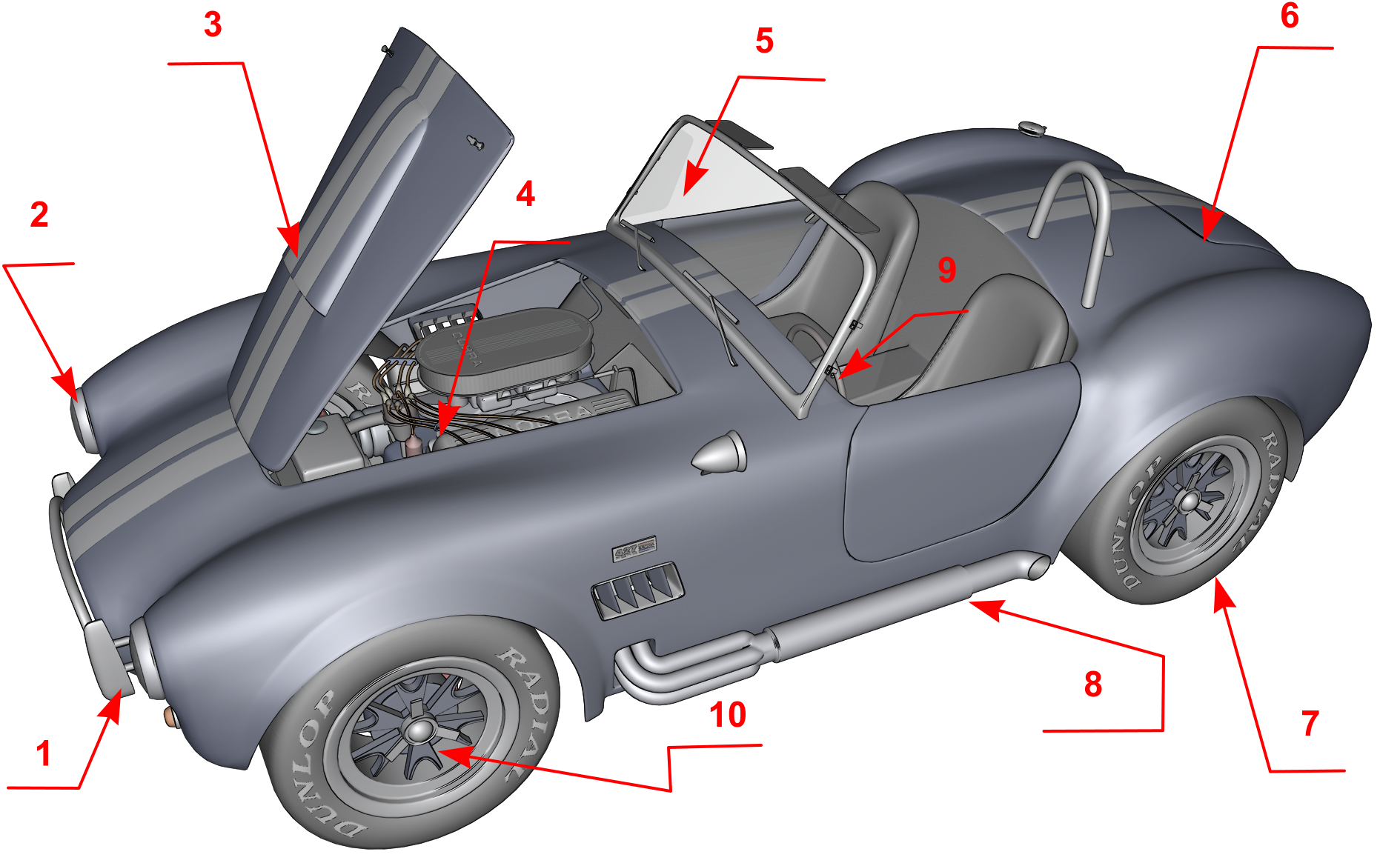
- •2) Parts of a car
- •3) Mini-video
- •4) Introductory text
- •2) In view of the fact that; because; as
- •5) Grammar introduction
- •Participles
- •Participle Forms
- •1. No conjunction:
- •Lesson 2
- •1) Grammar
- •Absolute Participle Clause
- •2) Active vocabulary
- •3) Reading Comprehension
- •4) Grammar
- •Lesson 3
- •1) Listening
- •2) Speaking
- •Lesson 4
- •1) Warm-up questions
- •2) Stages
- •3) Useful phrases
- •4) General tips
- •5) Now read a sample complaint letter to a car dealer. Provide your own information.
- •6*) Write your own letter of complaint based on the above patterns.
 Module
7
Module
7Transportation and travel: things with wheels
Lesson 1
1) Warm-up questions
1. What types of cars do you know? What are they generally used for?
2. What can you say about advantages and disadvantages of owning a car?
3. What do you know about the automotive industry and its history?
4. What do you think the future of automotive industry will bring? How can it change everyday life?
Useful words and speech patterns
I can name the following types/(dis)advantages: ... |
to be used for + V-ing/noun |
First/To begin with, … Next, … Finally, … |
to be used to + Infinitive |
As far as I know/remember/understand… |
to change smth in the following ways: ... |
I’m afraid I don’t/can’t... |
buggy, bus, cabriolet, combine harvester, dredger, racing car, tractor, truck |
To my mind…/ In my opinion... |
|
The biggest (dis)advantage of V+ing is... |

2) Parts of a car
Exercise 1.2.1. Work in groups. Match the words from the box to the numbers in the picture.
bumper; differential; drive wheel; engine; exhaust pipe; frame; headlight; hood/bonnet; shaft; steering wheel; transmission; trunk; tyre; windshield |
Exercise 1.2.2. Look at the following “equations” and explain what they mean:
chassis = frame + power train;
p ower
train = engine + transmission + shafts + differentials + drive
wheels.
ower
train = engine + transmission + shafts + differentials + drive
wheels.
Exercise 1.2.3*. Find a picture of a car and describe it to your groupmates using the words you have learnt.
3) Mini-video
Watch the video and discuss it in groups. Use the questions to help you:
1. Where does the video come from?
2. What is the title of the news report?
3. What innovations are mentioned?
4. What automotive companies presented their new designs?
5. What did you like best in the video? Would you buy any of these cars if you had enough money?
https://www.youtube.com/watch?v=wd33eHzjjlU
4) Introductory text
Read the text and answer the following questions:
1. How is this text related to the video you watched previously?
2. Are the ideas described in the text different from what you suggested at the beginning of the lesson? How?
3. Do you agree with the conclusions drawn in the text? Why?
Useful words
game changer n. |
«переворот» |
consumer n.attr. |
потребительский |
paved part. |
вымощенный |
to hail v. |
вызывать (о такси) |
dispatch network n. |
транспортно- экспедиционная сеть |
to utilize v. |
использовать |
wasteful adj. |
расточительный |
real estate n. |
недвижимость; полезная площадь |
largely adv. |
большей частью |
sidewalk n. |
пешеходная дорожка, тротуар |
unpredictability n. |
непредсказуемость |
traffic jam n. |
пробка, затор (в уличном движении) |
A future without human drivers
Self-driving cars can be compared to Henry Ford's Model T, which was like the iPhone of the time — a real technology game changer. At first, consumer cars seemed impossible — roads weren't paved and no one knew how to drive cars. But the product was a hit, and everything changed to make way for them.
Right now, it's hard to imagine not owning a car. But in the future, self-driving cars won't be purchased by the masses, only the wealthy. And driving a car yourself will be a hobby, not a necessity.
Instead, we'll hail autonomous vehicles that are parts of dispatch networks, like Uber or Lyft. The networks will be reliable and efficient, like subway systems are, and therefore affordable. It makes so much more sense from an economic point of view to share the cars and utilize them optimally. A car drops you off and picks up the next person, as opposed to the model now, which is just so wasteful, with the car sitting in a parking lot 90% of the time.
Parking spaces, which are estimated to take up 25% of city real estate, can be largely removed since people won't need to own cars. That means more room for parks and expanded sidewalks. Autonomous vehicles are likely to be electric, which will help keep air clean. There will be no street signs, because driverless cars won't need them. And fewer human drivers means less unpredictability and more vehicle coordination, which means fewer traffic jams. This is what will happen if a city converts its transportation system to use self-driving cars.
Exercise 1.4.1. Study the meanings of the word “since”. If possible, replace it with a synonym in the sentences below. What can you say about the relation between the meaning of the word and the verb tenses?
SINCE conj.: 1) in the period after a certain moment; from a certain time in the past;
